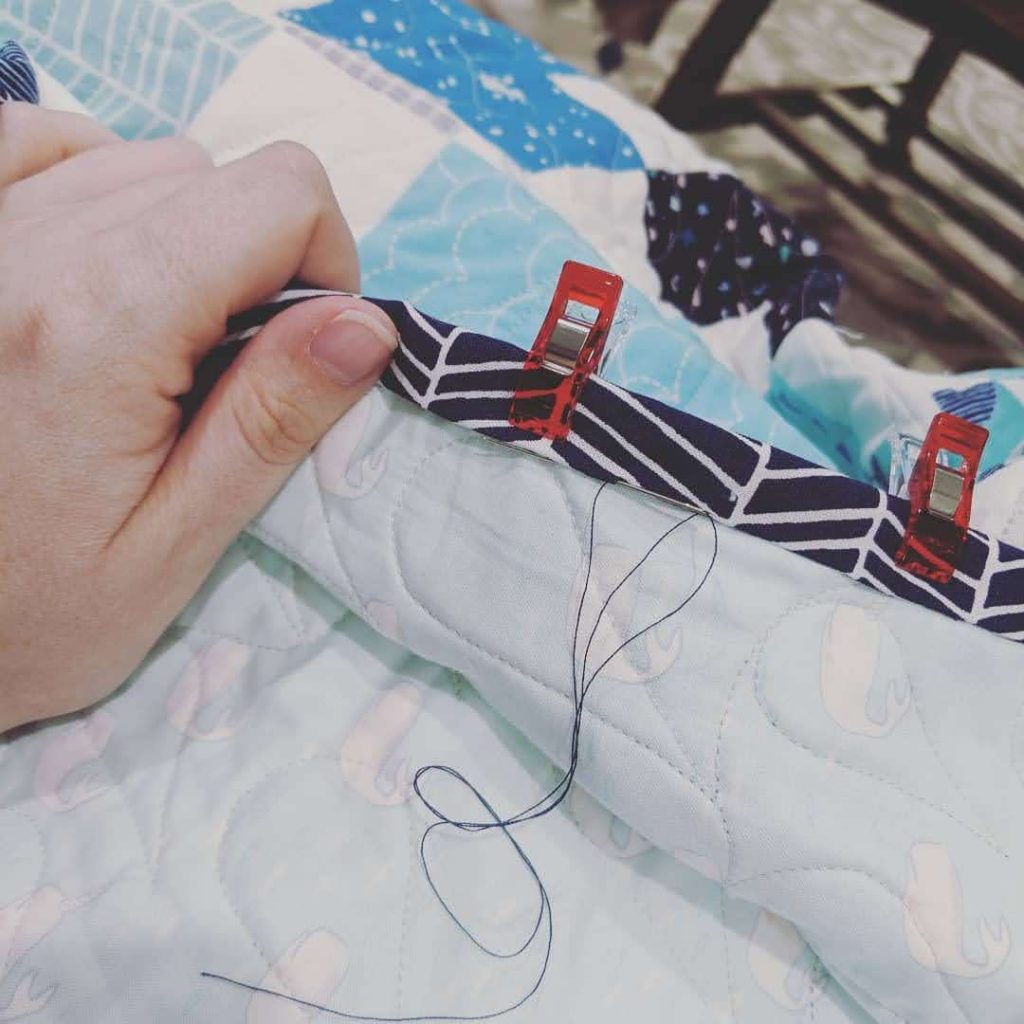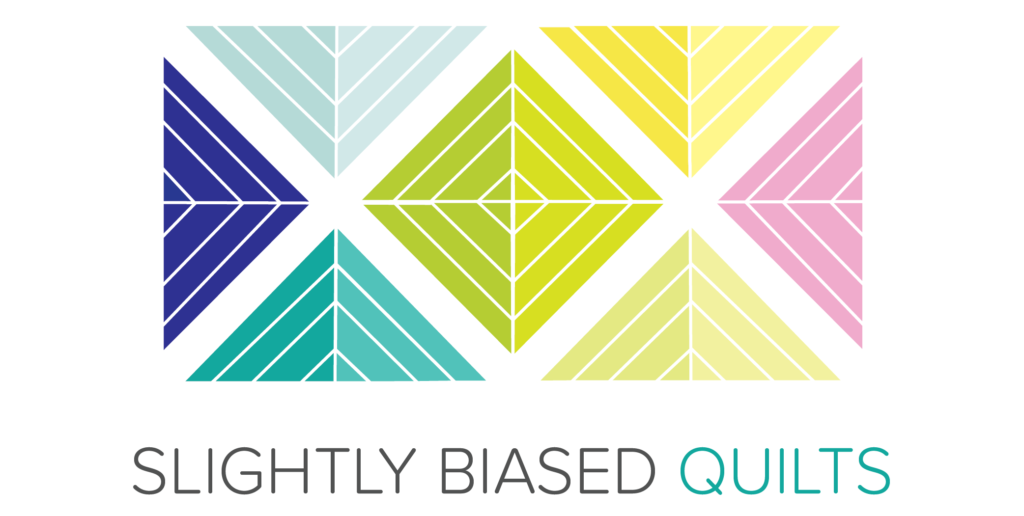Binding is the final, crucial step in completing a quilt. It’s the process of finishing the edges of the quilt to prevent fraying and to give it a polished, professional look. But beyond its practical purpose, quilt binding offers a fantastic opportunity to get creative and add a unique touch to your quilt. In this blog post, we’ll explore what quilt binding is, the basics of how to apply it, and some innovative ways to make your binding stand out.

What is Quilt Binding?
Quilt binding is a strip of fabric that wraps around the raw edges of a quilt sandwich (the quilt top, batting, and backing). Binding can be made from the same fabric as the quilt top, a complementary color, or a completely contrasting fabric to add a pop of interest. Check out this blog post for a how to binding blog and this one for all my tips on hand binding.
Getting Creative with Quilt Binding
Choosing Bold Colors and Patterns: Use binding as an opportunity to add a pop of color or pattern that contrasts with or complements your quilt top. A bold, patterned binding can frame your quilt beautifully and draw the eye to the intricate details of your work.
Scrappy Binding: Use leftover fabric scraps to create a scrappy binding. This not only makes use of fabric remnants but also adds a charming, eclectic touch to your quilt. Each segment of the binding can be a different fabric, creating a colorful and whimsical edge.
Decorative Stitching: Instead of the traditional straight or blind stitch, use decorative stitches to secure the binding. This can add an extra layer of detail and texture to your quilt. Experiment with zig-zag, blanket, or any of the specialty stitches your machine offers.
Flanged Binding: Add a small flange (a narrow strip of fabric) between the quilt top and the binding. This creates a slim, piping-like effect that adds dimension and a touch of elegance. It’s a simple technique that can make your quilt look more intricate and professionally finished.
Dual-Color Binding: For a striking effect, use two colors of fabric in your binding. One side of the binding can be one color, and the other side a different color, creating a reversible effect. This technique is particularly effective for quilts that are used as reversible throws.
Prairie Points: Add a row of prairie points along the edge of your quilt before applying the binding. Prairie points are small folded triangles of fabric that add a playful, textured edge. They can be a single color or a mix of coordinating fabrics.
Wide Binding: Instead of the standard narrow binding, opt for a wider binding. This can serve as a bold frame for your quilt and can be a canvas for additional quilting or applique work.
Quilt binding is more than just a finishing touch; it’s an opportunity to showcase your creativity and add a unique signature to your quilt. Whether you opt for bold colors, scrappy bindings, or intricate stitching, the way you finish your quilt can transform it from beautiful to extraordinary. So next time you’re binding a quilt, think beyond the basics and let your creativity shine through this final, important step. Happy quilting!
